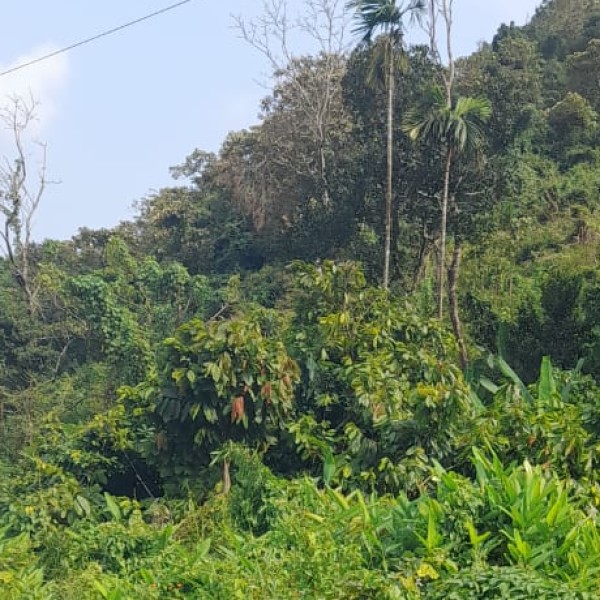Quick Facts
Ravangla, also known as Rabong, is a serene town nestled in the Namchi district of South Sikkim, India. Situated at an elevation of approximately 8,000 feet (2,438 meters), it offers panoramic views of the Eastern Himalayas, including peaks like Mt. Kanchenjunga, Mt. Pandim, Mt. Siniolchu, and Mt. Kabru . (Ravangla)
Geography & Climate
- Location: Ravangla is strategically positioned between Namchi, Pelling, and Gangtok, making it a convenient stopover for travelers exploring Sikkim . (Ravangla)
- Climate: The town experiences a temperate climate. Summers are mild, while winters can bring snowfall, especially in the upper regions. The months of April and May are particularly vibrant, with blooming orchids and rhododendrons adorning the landscape . (Ravangla - Trip India)
Demographics & Culture
- Population: As per the 2011 Census, Ravangla had a population of 2,282 residents .
- Languages: The town is linguistically diverse, with official languages including Sikkimese, Nepali, Tibetan, Lepcha, Limbu, Newari, Rai, Gurung, Mangar, Sherpa, Tamang, and Sunwar . (Ravangla)
- Tibetan Community: Approximately 1 km from Ravangla Market lies the Kunphenling Tibetan Settlement, established in 1978. Spanning 328 acres, it houses around 1,300 residents and features a primary school, two monasteries, administrative offices, and a primary health care clinic . (Ravangla – home - Central Tibetan Relief Committee (CTRC))
Economy & Agriculture
- Agriculture: Ravangla's economy is predominantly agrarian, with a significant emphasis on organic farming. The region cultivates crops like rice, maize, millet, wheat, barley, oranges, tea, and cardamom . (Sikkim - Wikipedia)
- Tourism: The town has emerged as a notable tourist destination, attracting visitors with its natural beauty, cultural heritage, and spiritual sites.
Tourism & Attractions
- Buddha Park (Tathagata Tsal): This park features a majestic 130-foot statue of Lord Buddha, constructed between 2006 and 2013 to commemorate the 2550th anniversary of Buddha's birth. The statue, made of 60 tonnes of copper, stands amidst landscaped gardens and offers panoramic views of the surrounding mountains . (Buddha Park of Ravangla)
- Ralang Monastery: Located about 6 km from Ravangla, this monastery belongs to the Kagyu sect of Tibetan Buddhism and is renowned for its intricate murals and peaceful ambiance . (9 Places to visit in Ravangla - Sikkim Tourism)
- Maenam Wildlife Sanctuary: Situated approximately 7 km from Ravangla, this sanctuary is a haven for nature enthusiasts. It houses diverse flora, including medicinal plants, and fauna like the red panda, Himalayan black bear, and leopard . (9 Places to visit in Ravangla - Sikkim Tourism)
- Temi Tea Estate: Established in 1969, this estate is the only tea garden in Sikkim and is renowned for producing high-quality organic tea. The estate spans 177 hectares and offers picturesque views of the surrounding hills . (Top 9 Places to Visit in Ravangla 2025 (With Pictures))
- Ralong Hot Springs: Known locally as 'Ralang Cha-Chu,' these sulfurous hot springs are believed to have therapeutic properties and are located near one of Sikkim's sacred caves . (Top 9 Places to Visit in Ravangla 2025 (With Pictures))
Flora & Fauna
Ravangla is a paradise for bird watchers. The region is home to species like the verditer flycatcher, blue-fronted redstart, grey bush chat, dark-throated thrush, blue whistling-thrush, green-backed tit, and white-browed fantail. The surrounding forests also host laughing thrushes, babblers, cuckoos, hill partridges, and the rare satyr tragopan . (Ravangla)
Accessibility
- By Road: Ravangla is well-connected by road. It lies approximately 65 km from Gangtok and 120 km from Siliguri, West Bengal. State highways link it to major towns in Sikkim . (Ravangla)
- By Air/Rail: The nearest airport is Bagdogra Airport in West Bengal, and the closest major railway station is New Jalpaiguri (NJP). From these points, travelers can hire taxis or take buses to reach Ravangla. (Buddha Park of Ravangla)
Ravangla seamlessly blends natural beauty, cultural richness, and spiritual serenity, making it a must-visit destination in Sikkim.
